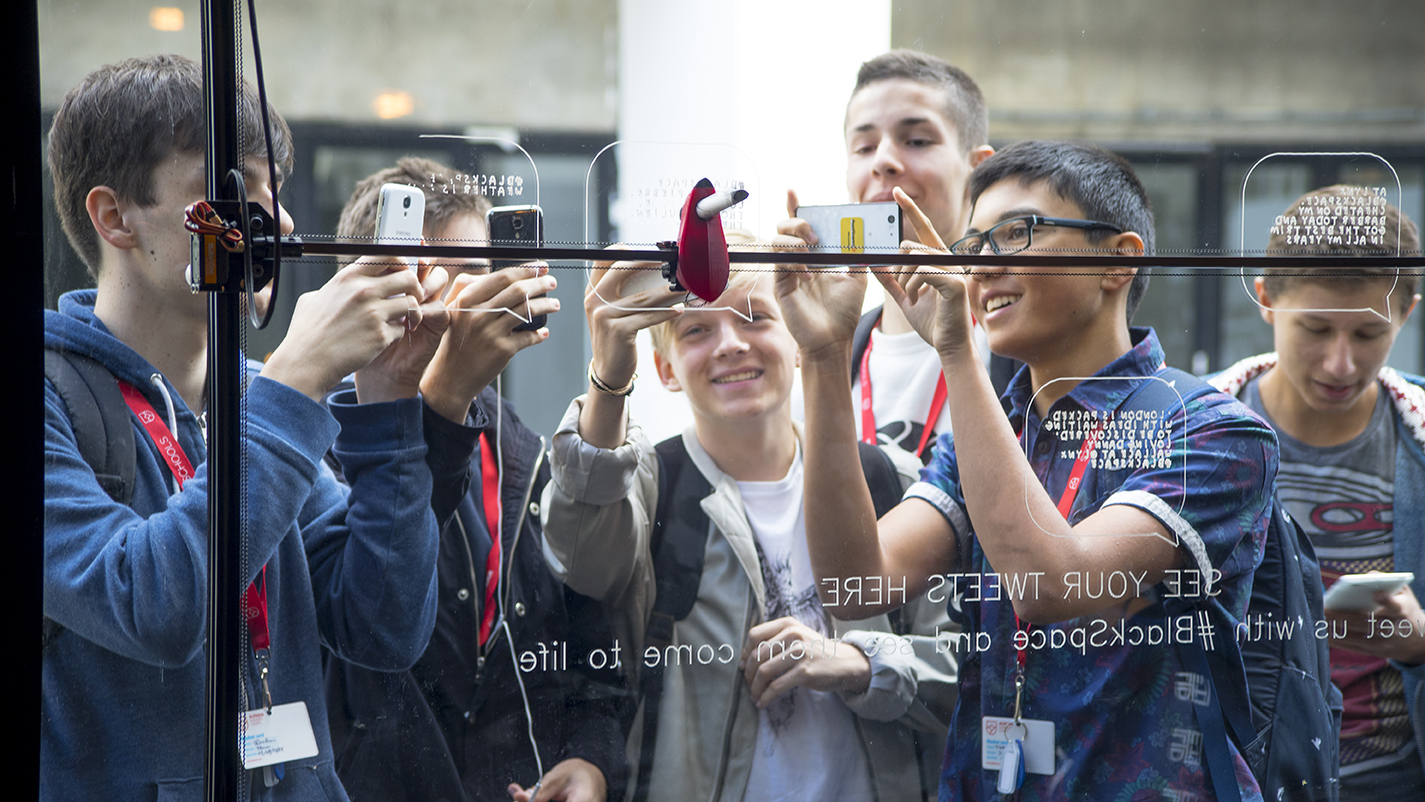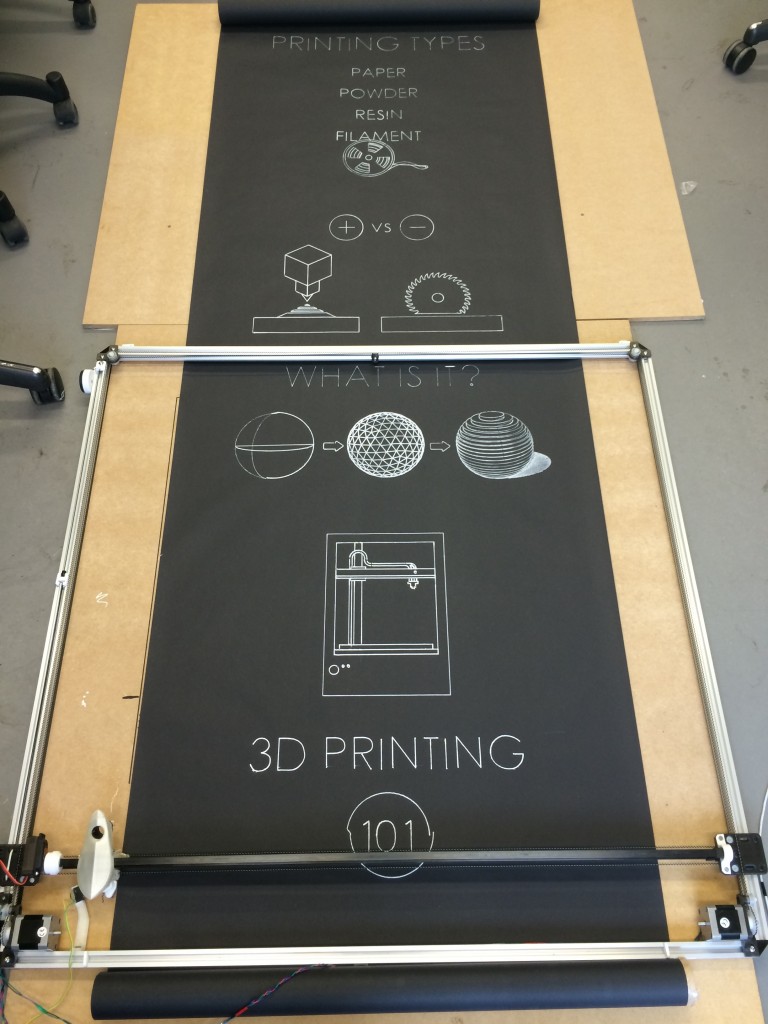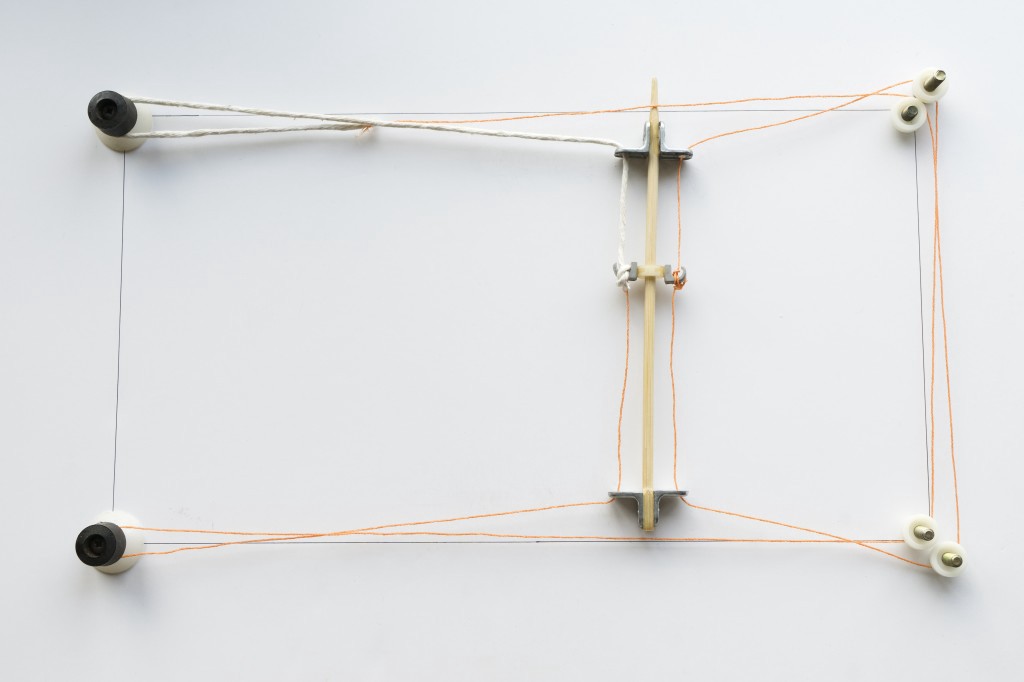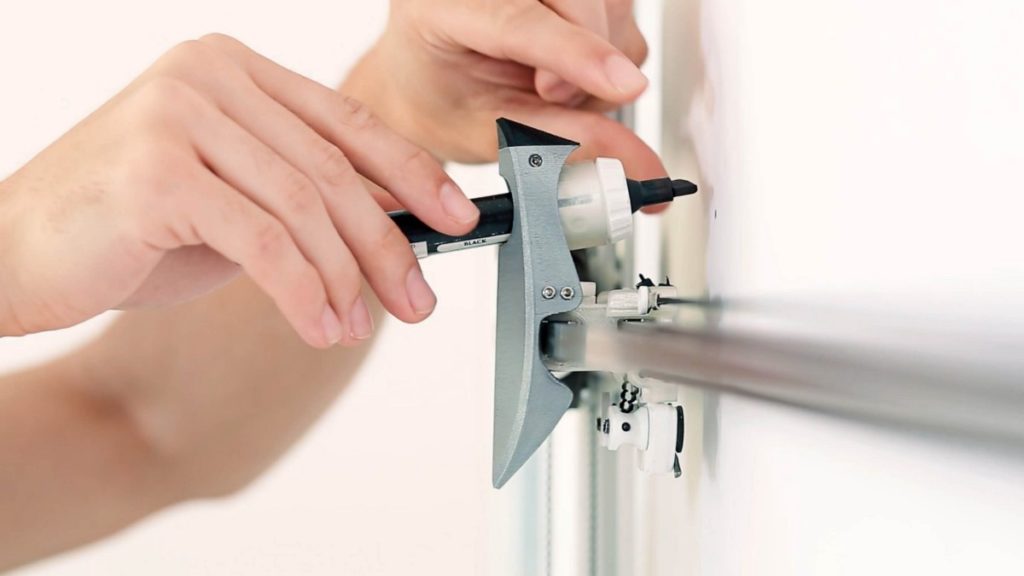Studio Visit: Those / JOTO
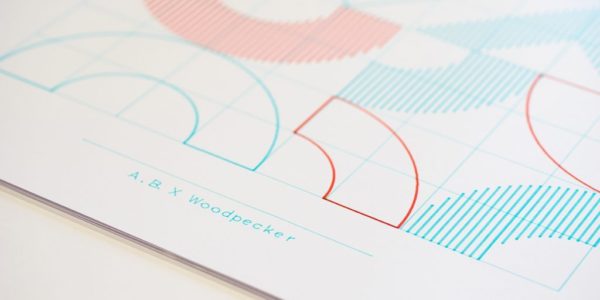
Connecting the physical and the digital world, 'Those' love to build with both materials and code, creating a unique blend of product and interactive design.
Building on early success with The Woodpecker; a lightweight, portable digital drawing system, the team recently unveiled Joto – a connected canvas for your wall that magically draws with a pen!
Enlisting early support from leading illustrators and designers Jon Burgerman, Anthony Burill, Sue Doeksen and Martina Paukova, here’s their incredible story so far..
Can you tell us briefly about your background(s) and how you came together to launch Those?
Although designers Jamie Wieck (Those, Co-Founder & Director) and Jim shared a studio space, the arrival of Barney (and his talent for 3D printing) allowed us to realise an idea Jim had sat on for years – building a giant plotter that could turn any retail window into an interactive display!
Before long, they transformed their proof-of-concept (constructed from chopsticks and string) into the Woodpecker. A product that not only opened the door to the likes of Maserati and Twitter, but created Those and sparked the development of what was to become Joto. Since then, we’ve built a six strong team with Guy Moorhouse, Carmen Domingo and Rishil Parekh helping to make Joto a reality.
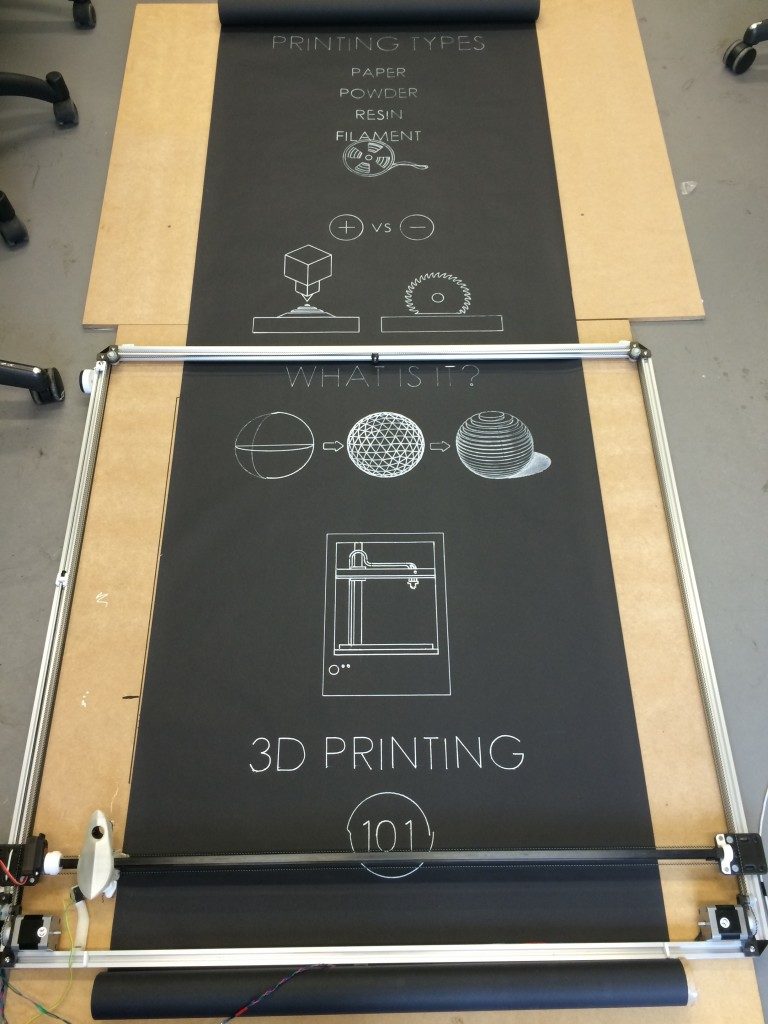
The Woodpecker – a scalable digital drawing tool that can be placed and programmed to draw on any surface.
Can you tell us anything about designing and bringing Joto to life?
The Woodpecker helped us learnt the first rule of hardware: that just because you have awesome hardware, doesn’t mean you have an awesome business. The Central Research Laboratory (known to all as the CRL) had invited us to join their first cohort after seeing the Woodpecker in action. Crucially, the CRL helped us take stock of Joto, understand it’s value, and provide us with the mental space to explore the potential of the technology.
Move a Joto from the home to a hotel room and it becomes an awesome message board; a more “human” way to communicate with customers. But shift it from the hotel room to the café downstairs, and it becomes the coolest coffeeshop noticeboard you’ve ever seen! The possibilities are endless!
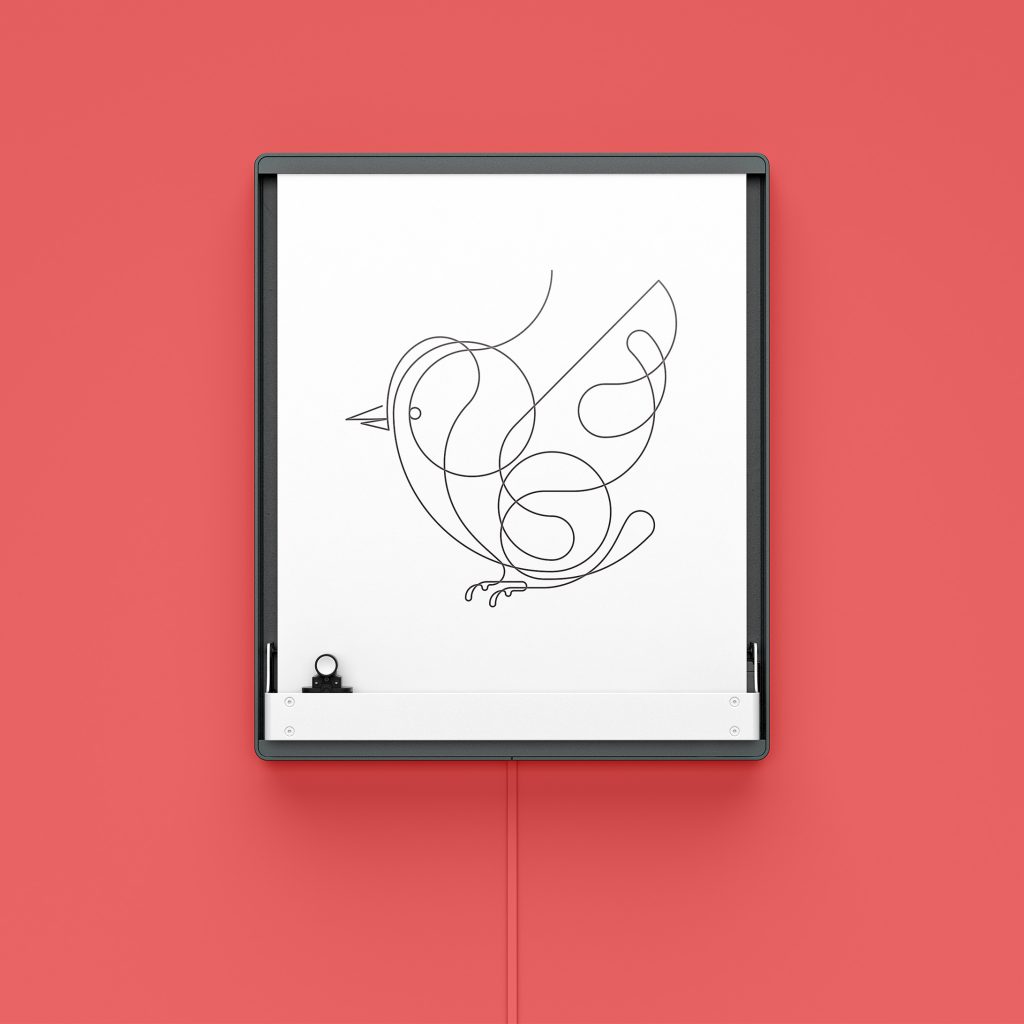
Joto takes the concept behind The Woodpecker – transferring digital files, whether it’s pictures, texts or tweets, and into a real life image – and applies it to a product accessible and suitable for home use.
Who or what inspired the idea for Joto?
Seeing how the public reacted to the Woodpecker sparked a realisation that “auto-magically” drawing things with a pen engaged people on a deep emotional level. We began to wonder if we could channel what we had learned from the Woodpecker into a smaller, mass-produced display; one that evoked the same joy as the Woodpecker – but the more we explored the idea, the more we realised we had something really exciting: a way to bring day-to-day digital interaction into our homes and offices without a screen. We started to think about if we could “download” real physical artwork into the home – and if there a way to experience social media without a screen. Could we entertain and educate the family without adding using yet another electronic glowing device? And so, Joto was born.
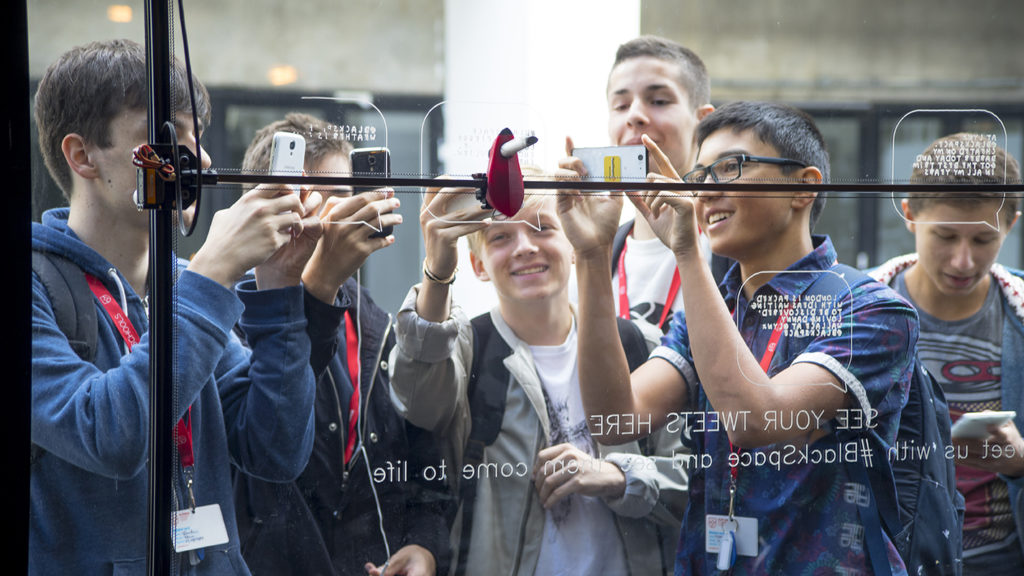
Public interest in the Woodpecker prototype sparked an idea to develop Joto –
Joto’s strength is its huge range of possibilities – it can display art and messages in the home, but the hardware’s functionality also changes with its location.
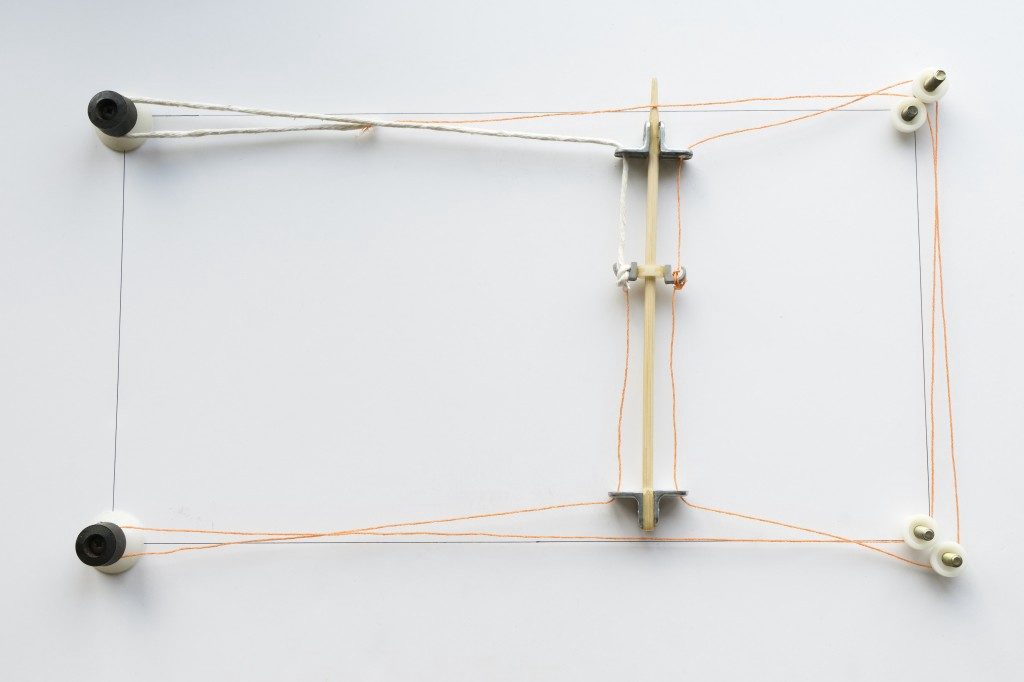
Woodpecker prototype

However, our biggest challenge has been to transform Joto from something that can be assembled at our desk into something that can be manufactured at scale on an assembly line; a steep learning curve that’s introduced us to a handful of acronyms.
What challenges have you faced in production? Can you tell us more about what has been involved?
So far we’ve been lucky. We’ve got a brilliant team and an awesome support network with every skill-set a startup could need. Whilst stressful, the road to production has been fairly smooth sailing*. However, our biggest challenge has been to transform Joto from something that can be assembled at our desk into something that can be manufactured at scale on an assembly line; a steep learning curve that’s introduced us to a handful of acronyms. Thankfully, as we developed our relationship with Shenzhen’s incredible manufacturing scene, we soon got to know our DFM (Design for Manufacture) from our BOM (Bill of Materials). (*Saying that, we did slip up early on, printing a stack of business cards for a trademark we couldn’t register. So, if you know what to do with 500 redundant business cards, give us a shout.)
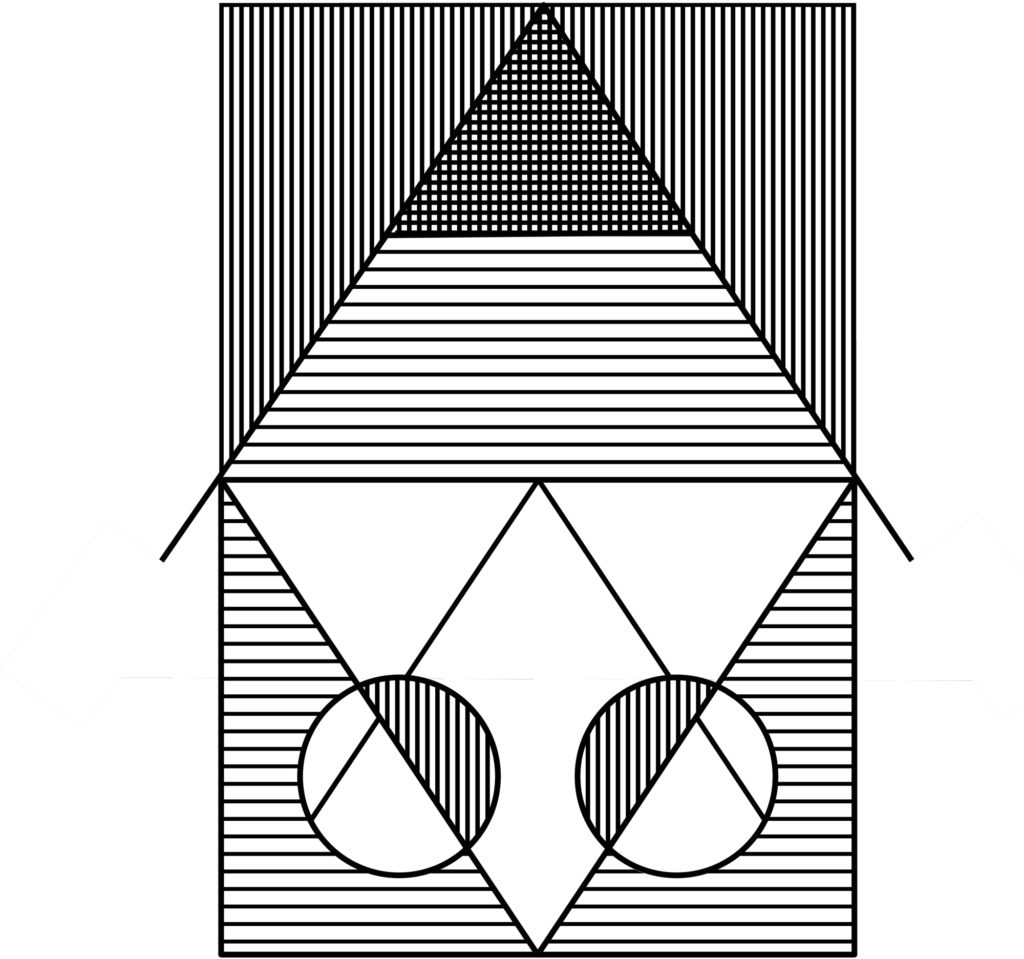
Illustration for Joto by Sue Doeksen
You’re working with some great illustrators and artists, how did you get them on board?
Joto is literally a frame that can draw its own art, so it has the potential to be an incredible platform for creatives. There’ll be no faster way to discover and “download” real artwork directly onto your wall. However, new ideas need seeding, so we’ve been collaborating with a wonderful array of talent to demonstrate the capabilities of Joto. With the likes of Anthony Burrill (below), Martina Paukova and Jon Burgerman getting to grips with our technology, it’s heartening to see we’re responsible for something that’s inspired the creative community!
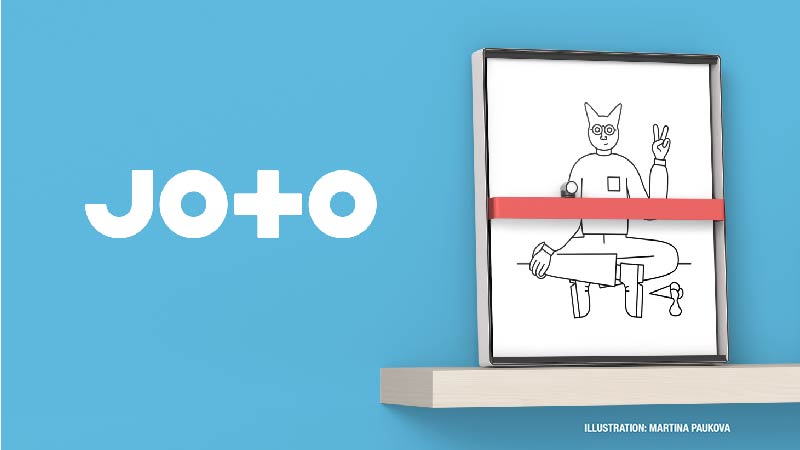
Why are you launching a Kickstarter for the project rather than seeking out investors? The added social reach that crowd–funding can bring is quite important to you I imagine?
Although we’re a funded startup, Kickstarter is crucial for the development of Joto because it helps us cultivate a community. A milestone to validate the product and fund its production.

Have you been happy with the level of the interest so far? What does the Design of the Year nomination mean to you?
Launching a project with this level of invention and ambition is difficult. We have had to build everything: from the hardware and fulfilment logistics, to the community and their content. The Design of the Year nomination is not only vital industry validation, but it’s a moment for us to take a breath and look back. A chance to celebrate what we’ve achieved so far and embrace an audience who see us sharing a category with names as established as Adidas, Kodak and Lego.
What can Joto backers expect in return for supporting the Kickstarter?
Recognising Joto is something completely “new”, our goal is to take everybody who joins our community on a journey. We want to give our community the chance to contribute their ideas to help us design a product with the features they need. So along with some surprise rewards (a chance to experience a “dinner and a show” with Jamie has been mooted!) everybody who joins our “early bird” club, receives an exclusive Kickstarter discount.
Read about the artists behind the latest Joto contributions over on Those blog here.





